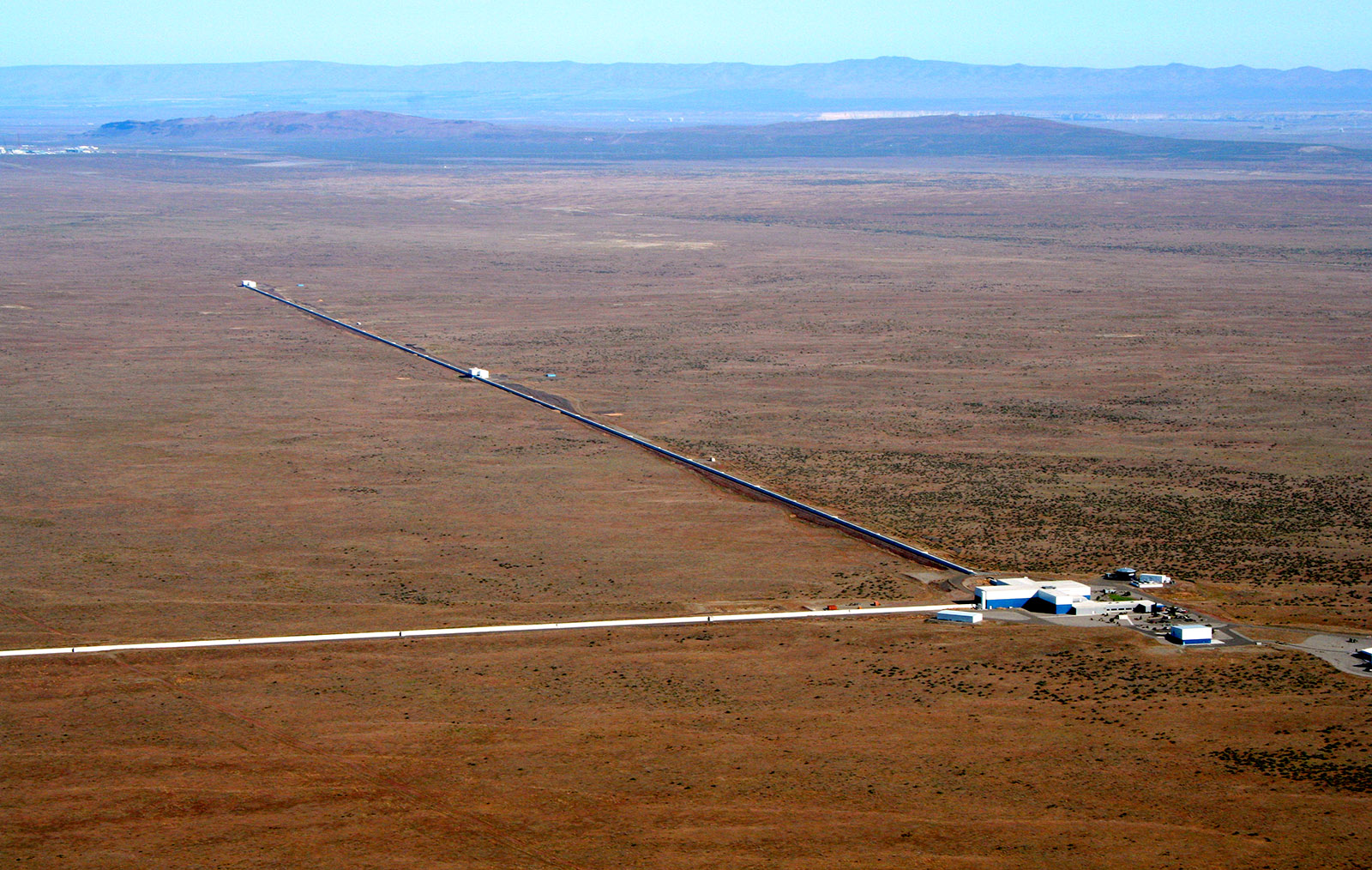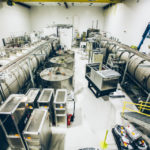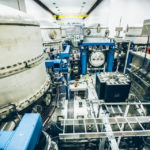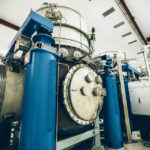Greg Ogin '04 is one seriously smart Tommie. Need evidence? When talking with him about his life and career path, terms such as “quantum optics,” “coefficient of expansion” and “computational simulations of the neural cortex” get sprinkled in because, well, that’s just the kind of stuff he does.
“I think he broke the system,” professor of physics Martin Johnston recalled. That’s because Ogin graduated with three separate degrees in physics, electrical engineering and mathematics (you read that right). It actually caused some confusion for the audience at commencement.
“We deal with a number of bright people around here,” Johnston said. “But he was definitely one of the brightest ones we’ve seen.”
These days, the 34-year-old assistant professor at Whitman College in Walla Walla, Washington, is being celebrated for his role in one of the biggest scientific breakthroughs of our lifetimes: the detection of gravitational waves.
On Sept. 14, 2015, gravitational waves were detected for the first time, cementing Albert Einstein’s theory of relativity with physical confirmation and literally opening up an entirely new – and less restricted – way of observing the universe through gravity. This breakthrough was possible thanks to LIGO, the Laser Interferometer Gravitational-Wave Observatory, a massive scientific experiment and collaboration that Ogin has been a part of since 2006 when he was a Ph.D. student at California Institute of Technology (Caltech).
“It’s hard to describe how amazing and fantastic it was,” Ogin said.
“When Galileo looked out at the sky with optical telescopes ... and since then as we’ve used infrared, X-rays, gamma rays, etc., ... every time we’ve built something to look at the visible and invisible spectrum we’ve learned something new about the universe,” Ogin mused.
“This is an entirely new phenomenon. We have no idea what we’re going to end up finding. That’s really cool.”
Waves on Waves on Waves
Speaking of cool, let’s take a moment to appreciate exactly what we’re talking about here: LIGO detected an insanely small distortion in the fabric of space and time, the result of two black holes colliding more than a billion light-years away from Earth after circling each other at half the speed of light.
This discovery physically confirmed (as that other really smart dude, Einstein, predicted and as has been confirmed mathematically since 1974) that gravity is moving across time and space in waves, like ripples on the universe’s proverbial pond. So, the gravitational waves of, say, two black holes each about 30 times the size of our sun colliding would make – in the vernacular of Ogin’s native Hawaii – some pretty gnarly swells moving throughout the universe.
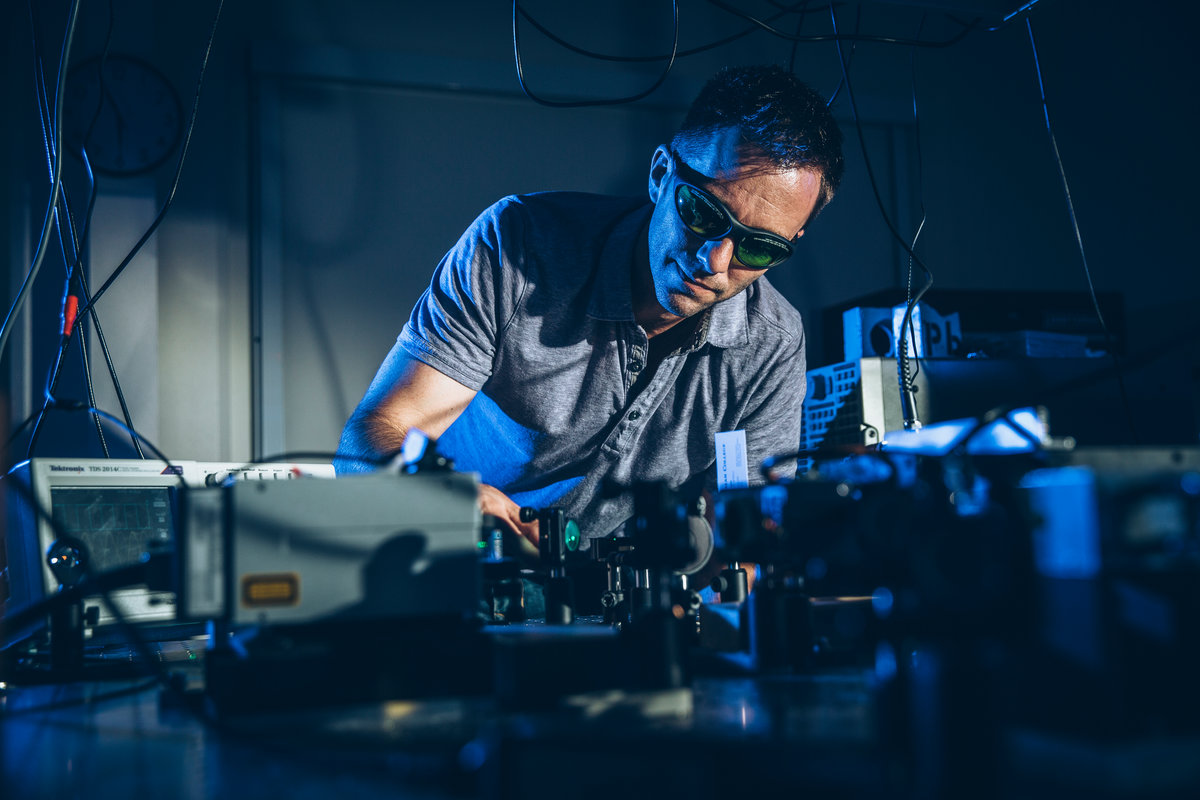
Greg Ogin '04
Similar to waves moving out from a rock thrown into water, the waves from this phenomenon grow weaker over space and time. When we detect those waves on Earth they’re smaller. Actually, way smaller. As in, thousands of times smaller than the nucleus of an atom. (For context: There are 7 billion billion billion atoms in the human body. We’re talking crazy small waves here.)
With engineering so incredible it blurs the line of magic, the LIGO instruments create a system that beams lasers across 2.5 miles of mirrors in an air-free vacuum. The beams are manipulated by incredibly specialized mirrors to actually travel about 700 miles within that space and – across all of that – LIGO can detect the aforementioned insanely small disruptions from gravitational waves.
Developing a system capable of this level of precision has taken decades and more than $1 billion, but even more important is the level of collaboration. On the actual paper published in February announcing the discovery, Ogin’s name is tucked neatly into the second of three full pages of contributors to the project. He is one of the more than 1,000 scientists of the LIGO Scientific Collaboration (LSC), a testament to the collective human brain and willpower required to pull off something this big.
“It was a huge community effort,” Ogin said, adding that LSC is just “a bunch of people who are really interested in what they do and all have had this amazing vision for what they were driving toward together.”
Ogin’s expertise in this research helped to inform the “thermal optic properties” of the mirrors inside LIGO, essentially examining the infinitesimally small “jiggling” of these mirrors due to temperature changes and what it means for detection.
The funny thing is, Ogin had zero ambition to be part of a “big science” project like this. As he discovered as a student in St. Paul, he wanted to teach at a small liberal arts college like St. Thomas, which usually doesn’t equate to doing “major” research for the likes of LIGO. It makes sense, though, in a universe as big as this, that some things just have a way of working out.
Big Science, Little Lab
Ogin looks back on his more-than-a-decade-long higher educational path as a sequence of steps that “always just made sense at the time.” He started at St. Thomas where he linked up early and often with faculty who were willing to let him loose researching. Three of Ogin’s former faculty at St. Thomas – Johnston, Jeff Jalkio and Paul Ohmann – all describe a student who jumped feet first into research opportunities, which Ogin credits as a major reason why he landed a prestigious internship at Los Alamos National Laboratory the summer after his fourth year.
“It was incredibly valuable,” Ogin said of his research experience at St. Thomas. “I was up against people from Berkeley and Stanford. How do I compete with people from those places? It was that a lot of them didn’t have undergrad experience. Professors at bigger schools have different pressures to publish and a lot more graduate and postdocs to help them ... so it’s hard to find experience as an undergrad. The fact I already had years [of research] under my belt set me apart.”
Ogin worked at Los Alamos the summer before his fifth year at St. Thomas and “got my big introduction to optics research,” which deals with the properties of light – i.e., lasers. He was hired back for another year after graduating from St. Thomas, landing him further experience and recommendations that helped get him into Caltech.
Ogin already had decided while at St. Thomas that “come hell or high water” he was going to find a way to teach at a school “that cared more about the students than the research.” So, at Caltech he sought out opportunities for small-scale, tabletop optics research that he hoped would apply well as a teaching-first professor. A winding track of advisers and teaching assistant work eventually brought Ogin to Eric Black, who already was working with LIGO and encouraged Ogin to join him.
“I told him my concern about big science not being great to teach at a small school,” Ogin said. “He had a lab where they were doing measurements and he convinced me that someone could do this. He was measuring thermal noise ... in the mirrors we use [for LIGO], and he had set up his own lab with a vacuum chamber to measure this. The results were very interesting for LIGO, but the research was very small scale. It took some convincing [that one] could do this on a small, liberal arts scale, but it’s all gone really well since then.”
Famous Now, Teacher Always
That might be an understatement. Since then Ogin has continued contributing research for LIGO while earning his Ph.D. and transitioned to his current position at Whitman College, where he helps run a quantum optics lab and was the center of attention Feb. 11 when the gravitational wave discovery was announced.
“I was like a kid on Christmas: I got up at 4 a.m. and I told myself, ‘You’ve got three more hours to sleep,’ but my body was having none of it. It knew, ‘Today’s the day!’” Ogin said.
Some 1,500 miles away, Ogin’s former teachers at St. Thomas were – and have remained – pretty excited too.
“He was a wonderful student and he’s a wonderful person, so we’re all so happy to see him have this success,” Ohmann said. “It was just like, ‘Go, Greg!’”
Ogin gave a presentation in one of Whitman’s large lecture halls that afternoon detailing the significance of this discovery and its potential into the future. It was fitting, certainly, for him to be in that position in front of students, taking the cutting-edge scientific research he contributes to and applying it to what he has long known he was meant to do: teach.
“The LIGO has been fantastic and all the people involved with it are amazing and good at what they do and fun
to work with, but teaching has called out to me. I’m really lucky that I’ve been able to follow this path,” Ogin said. “I can imagine a path for myself where I was in this same job and not connected to LIGO and I’m every bit as happy as I am now without the big discovery.”
Luckily Ogin can stick to just imagining that. In this universe black holes collided long ago and far away, and Ogin and so many others came together to make possible a project that detected the waves of that collision as they passed by Earth.
And that’s pretty cool.
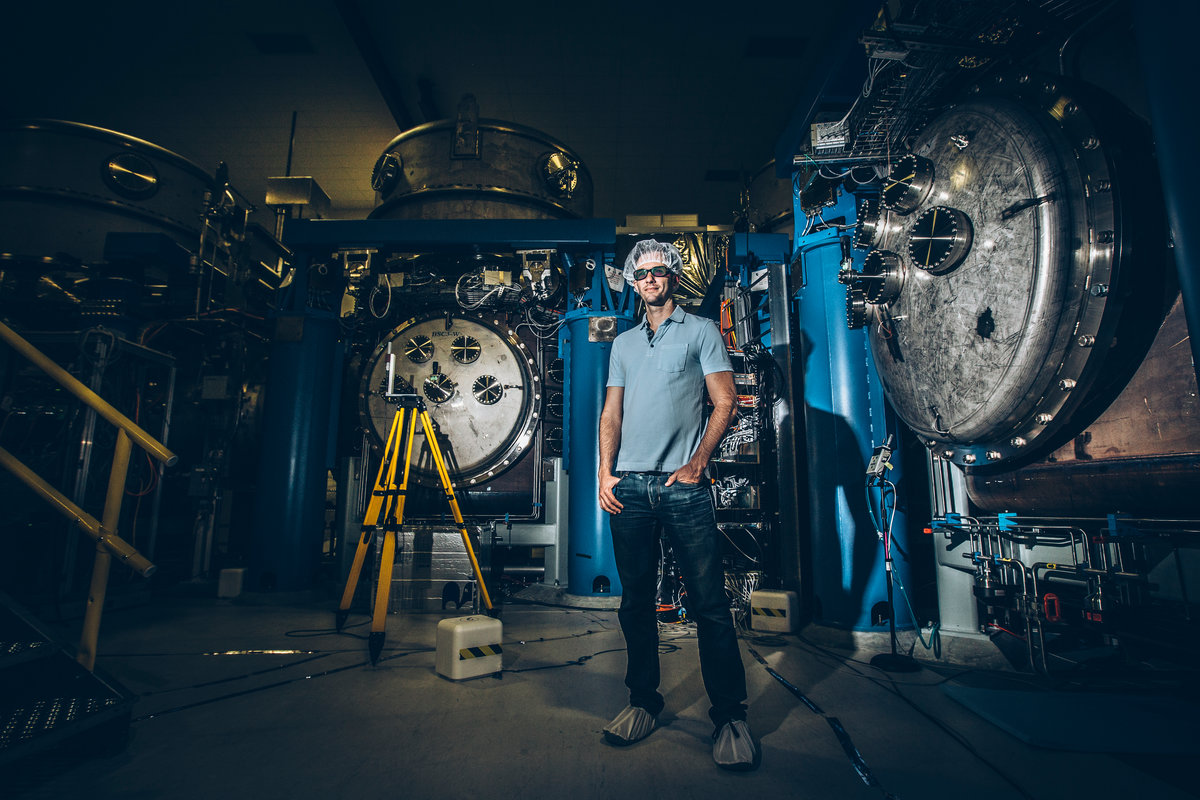
Read more from St. Thomas magazine.
